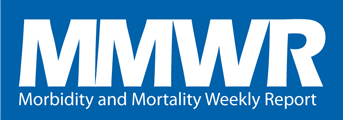MMWR News Synopsis for May 7, 2015
Increases in Hepatitis C Virus Infection Related to Injection Drug Use Among Persons Aged <30 Years — Kentucky, Tennessee, Virginia, and West Virginia, 2006–2012
National Center for HIV/AIDS, Viral Hepatitis, STD, and TB Prevention
404-639-8895
NCHHSTPMediaTeam@cdc.gov
Evidence suggests drug injection and prescription opioid abuse are fueling hepatitis C increases in four states east of the Mississippi River. Surveillance data show a national increase in acute hepatitis C virus (HCV) infections from 2006-12, with the largest increases occurring east of the Mississippi River. To better understand the increase in HCV and its correlation to injection drug use, researchers reviewed surveillance data from four states showing a 364 percent increase in cases — Kentucky, Tennessee, West Virginia, and Virginia — along with drug treatment admissions data. Nearly half (44.8 percent) of HCV cases occurred among people under 30, with a median age of 25. Significant increases in both urban and non-urban areas were found, with more than double the rate of cases occurring in non-urban areas. The majority of those diagnosed were white, and equally as likely to be male as female. Of the cases for which risk data were identified, 73.1 percent reported injecting drugs. Data showed increases in the proportion of persons under 30 admitted for abuse of any opioid (21.1 percent), abuse of prescription opioids (16.8 percent), and injection of any opioid (12.6 percent). While HIV prevalence in this population is currently low in these four states, the regional increase in HCV infections raises concerns about the potential for an increase in HIV infections, as injection drug use is a risk factor for both HIV and HCV. Combined, these findings highlight the need for increased HCV testing, care, and treatment services within substance abuse treatment programs.
Identification and Linkage to Care of HCV-Infected Persons in Five Health Centers — Philadelphia, Pennsylvania, 2012–2014
Patty Griffin
Public Health Management Corporation
267-205-4174
pgriffin@phmc.org
An innovative community health center initiative expands hepatitis C virus (HCV) testing, diagnosis, and linkage to care among vulnerable populations at high risk for infection in Philadelphia. Hepatitis C affects about three million Americans and causes serious illness such as chronic liver disease, liver cancer, and even death. With CDC funding, the National Nursing Centers Consortium integrated routine HCV testing and intensive linkage-to-care services into five federally qualified health centers in Philadelphia. Of the 4,514 patients tested from October 2012 through July 2014, 595 (13.2 percent) tested positive for exposure to the virus and 550 of those (92.4 percent) received confirmatory testing for current (i.e., chronic) infection. Of the 390 (70.9 percent) confirmed with current infection, 348 (89.2 percent) received their results, 304 (78.0 percent) were referred to a HCV-care specialist and 240 (61.5 percent) were seen by a specialist. Overall, 8.6 percent of patients were found to have current HCV infection. Unique program features included the use of a medical assistant to initiate testing; protocols that allowed for initial and confirmatory tests to occur in one visit; electronic medical record modifications to prompt, track, report and facilitate repayment for testing; and intensive linkage-to-care services by a coordinator who contacted patients to address any barriers to care. Community health centers, in collaboration with public health agencies and service providers, are uniquely positioned to expand access to testing, care and treatment among disproportionately affected populations.
Cancer Screening Test Use — United States, 2013
CDC Media Relations
404-639-3286
Many people are not receiving breast, cervical and colorectal cancer screening as recommended. These screenings can reduce deaths from these cancers. People should talk with their healthcare providers about what screenings are appropriate for them, when they should start to receive them, and how often tests should be repeated. Screening for breast, cervical and colorectal cancer can reduce deaths from these cancers. While many people are up-to-date with these screenings, there is room for improvement. In 2013, screening use was below national targets, with no progress in increasing screening use compared with 2010. Among adults of screening age, 72.6 percent of women reported having a mammogram within two years (Healthy People 2020 target 81.1 percent), 80.7 percent reported having a Pap test within three years (target 93.0 percent), and 58.2 percent of adults reported having recent colorectal cancer screening (target 70.5 percent).
###

